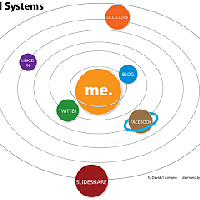Home
About Us
Department of Housing and Urban Development: Energy Innovation Funds for Multifamily Pilot Program
by: Iola BonggayIn year 2009, the president of the United States of America signed the Consolidated Appropriations Act of 2010 wherein an appropriation amounting to $50 million serving as an Energy Innovation Fund was included.
|
|
The Energy Innovation Fund was directed towards the discovery of innovations in terms of the residential energy efficiency sector and to help in the development of a standardized home energy efficient retrofit market.
Of the said amount, the Congress directed that $25 million shall be for the Multifamily Energy Pilot Program which was exclusively designed for multifamily housing markets.
Pursuant to the Consolidated Appropriations Act of 2010, the Department of Housing and Urban Development(HUD), has recently announced a funding opportunity entitled Energy Innovation Fund: Multifamily Pilot Program.
This funding opportunity supports innovations in financing and conducting applied research studies in the hopes of addressing primary concerns halting the retrofitting of certain multifamily residential properties in their quest towards achieving energy efficiency on a highly cost effective basis.
The funding announcement is also driven towards the accomplishment of the following objectives:
a) demonstrate ways to eliminate or address the concerns against the implementation of energy efficiency and renewable energy improvements in present multifamily properties
b) provide private capital and additional public funding to demonstrate "proof of concept"
(continued...)
Department of Housing and Urban Development: Energy Innovation Funds for Multifamily Pilot Program
Page 2
About The Author
Iola Bonggay is an editor of TopGovernmentGrants.com one the the most comprehensive Websites offering information on government grants and federal government programs. She also maintains Websites providing resources on environmental grants and grants for youth programs. |
Additional Resources
category - Home Improvement Grants
Community Development Block Grant Program for Indian Tribes and Alaska Native Villages
Grants From the Department of Housing and Urban Development
She also maintains Websites providing resources on environmental grants and grants for youth programs.
Lead-Based Paint Hazard Control Grant Program
Department of Housing and Urban Development's Dollar Homes Program
Follow @topgovtgrant
Social Entrepreneurship
Spotlight
Social Enterprise Version 2.0

Midsize businesses are tapping into the social business market because large companies do not need the help of start-ups to create a “social technology stack.” But a social business stack cannot generate revenue by itself.
